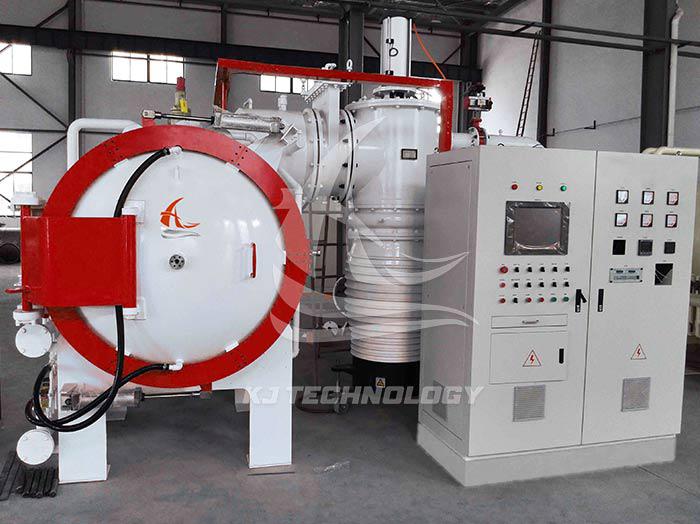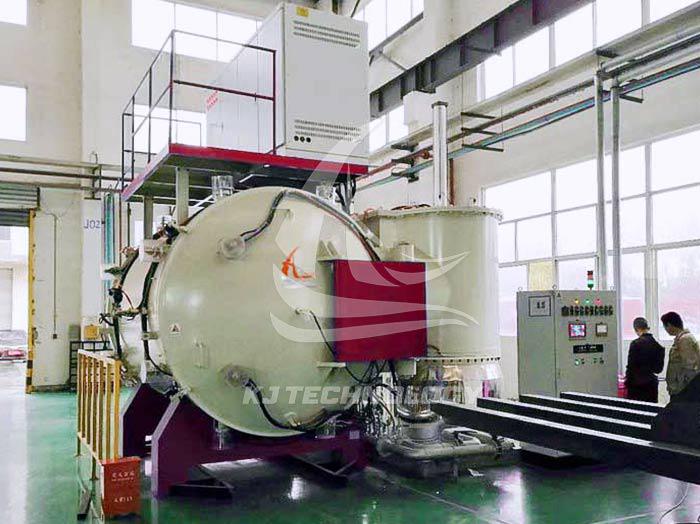What should be noted when choosing a vacuum sintering furnace?
 03-20-2025 Author: KJ technology
03-20-2025 Author: KJ technology
When choosing a vacuum sintering furnace, multiple aspects need to be considered comprehensively to ensure that the selected equipment can meet production needs and has good performance and reliability. Here are some key precautions:
1. Clearly define production needs and objectives
Material type and batch size:
Consider the types of materials that need to be sintered, such as hard alloys, functional ceramics, powder metallurgy, etc.
Determine the required batch size based on the production scale to choose the appropriate furnace size.
Sintering temperature and atmosphere:
Select a sintering furnace with a corresponding temperature range according to the sintering temperature requirements of the material.
If the sintering process requires a specific atmosphere (such as inert gas, reducing gas, etc.), it should be ensured that the sintering furnace has atmosphere control function.
Equipment budget and frequency of use:
Select appropriate equipment models and configurations based on budget constraints.
Considering the frequency of device usage, high-frequency devices should be selected for models that are more durable and have lower maintenance costs.
2. Heating method and furnace type selection
Heating method:
Electric sintering furnace: high energy utilization rate, good environmental performance, suitable for small batch and high-precision sintering requirements.
Gas fired sintering furnace: Low cost, fast heating speed, suitable for large-scale and high-efficiency production.
Furnace type selection:
Box type sintering furnace: simple structure, easy operation, suitable for sintering various materials.
Tube sintering furnace: suitable for sintering slender rod-shaped or tubular materials.
Bell type sintering furnace: suitable for large-scale and continuous production.
3. Vacuum system and sealing performance
Vacuum requirement:
Select a sintering furnace with the corresponding vacuum degree according to the requirements of the sintering process for vacuum degree. For example, the preparation of semiconductor materials may require ultra-high vacuum (<10)
−3Pa).
Sealing performance:
Good sealing performance is the key to ensuring stable vacuum inside the furnace. When choosing, attention should be paid to the maximum vacuum degree and leakage rate of the sintering furnace.
4. Control system and degree of automation
Temperature control accuracy:
For processes that require high precision temperature control, sintering furnaces with high-precision temperature control should be selected.
Automation level:
Choosing equipment with high automation can improve production efficiency and reduce manual operation errors.
The control system should have data recording and traceability functions to analyze and optimize the production process.
5. Auxiliary devices and safety measures
Auxiliary device:
Based on actual needs, consider whether it is necessary to equip auxiliary devices such as atmosphere control devices and cooling systems.
Safety measures:
Choose equipment with comprehensive safety protection functions, such as over temperature protection, vacuum monitoring, pressure protection, etc., to ensure the safety of operators and the stable operation of equipment.
6. Manufacturer and after-sales service
Manufacturer's professional level:
Choosing a manufacturer with a good reputation and professional level can ensure the quality and performance of the equipment.
after-sale service:
High quality after-sales service can provide timely technical support and maintenance in case of equipment problems, reducing the risk of production interruption.
7. Other technical specifications and parameters
Furnace size:
Determine the diameter and length of the furnace based on the size and quantity of the samples.
Heating and cooling rates:
The speed of heating is related to the selection and quality of thermocouples.
A fast and effective cooling method can shorten the working cycle and improve production efficiency.
Temperature uniformity:
Temperature uniformity has a significant impact on the quality of sintered materials. When choosing, attention should be paid to the temperature uniformity of the sintering furnace at different temperature points.
Heating element material and wiring method:
The material of the heating element should have good thermal conductivity and high temperature stability.
The wiring method should be safe and reliable, and not prone to short circuits.
8. Installation and Operating Environment
Installation environment:
The environment for installing electric furnaces must meet vacuum hygiene requirements, with clean and dry surrounding air and good ventilation conditions.
Operation and maintenance:
Regularly maintain and upkeep the equipment to ensure it is in good working condition.
Operators should strictly follow operating procedures and safety regulations, and strengthen safety awareness education.
Overall, when choosing a vacuum sintering furnace, it is necessary to consider multiple aspects such as production requirements, heating methods and furnace types, vacuum systems and sealing performance, control systems and automation levels, auxiliary devices and safety measures, manufacturers and after-sales service. By carefully comparing and evaluating sintering furnaces of different models and brands, one can choose the high-quality equipment that best suits their production needs.








